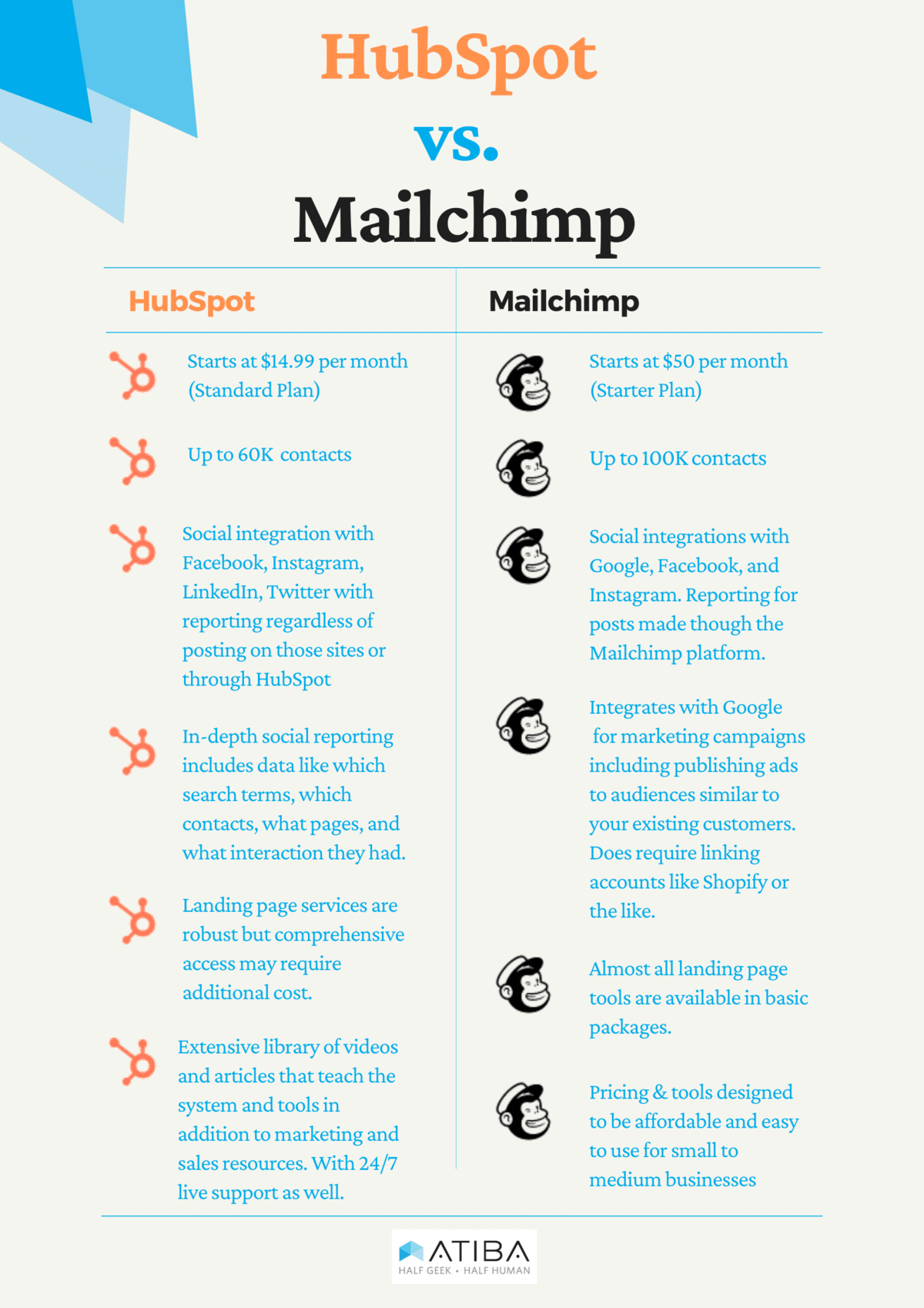The average person is well-versed in emails. Sending emails, receiving emails, bulk-deleting emails, we’ve seen it all. According to a recent study, the average person receives 121 emails every day and sends out around 40. That’s a lot of mail!
While it would be nice if a large chunk of those received emails were personal well-wishes or people actually trying to give you $10 billion, most of those emails are marketing emails sent by a company that you purchased one item from years ago. Even though you may delete most of them, they have to do some good, right? If they weren’t effective, then why would they continue to be sent on a regular basis?
For those in business, you’ve no doubt thought about a mass email marketing campaign while weighing the pros and cons of getting a campaign off the ground. Will it bring more business? Will it be worth it? Will people actually open my emails?
Today, we’re going to run over some of the biggest questions and most important tips to ensure you have a successful email marketing campaign.
Is email marketing effective?

Before you even consider the steps, it’s a good question to ask. Is this whole song and dance even going to be worth it?
The short answer is yes, email marketing is still effective. According to the folks at HubSpot (whom we love here at Atiba), email brings in $38 for every $1 spent. For those counting at home, that’s an amazing 3800% ROI. Not bad!
We have to understand that email marketing is something that’s been around for a while. While many tactics, tools, and software have changed or evolved over the years, this form of marketing has stood the test of time.
Plus, if you look at the raw stats, there’s a lot of encouraging information from the report above:
- Roughly 51% of the world’s population uses email
- Almost 50% of users open emails on their phone
- Almost 80% of marketers have noticed an increase in email engagement in the last year
- 60% of users say emails help influence buying decisions
That’s a lot of great information. But to take advantage of email marketing, you have to make sure you’re doing it effectively.
What is considered ‘mass email’?
Mass email, also called bulk email, is the act of sending one email to a large group of people at the same time. That email could be a newsletter, special offer, business update, coupon book, eBook, event invitations, basic marketing emails, or even a holiday letter. No matter the type of content, the goal is the same: send an email to a whole boatload of people.
But where to start? Do you start by manually entering each person’s email in the “To” field? Well, you could, but there are much better ways to go about it.
To craft an effective email campaign, you’re going to need CRM (customer relationship management) software, email templates, a proper email hosting service, a bit of creativity, and of course, a theme to your emails. We’re going to be diving into all those in a minute, but let’s go over some important questions first.
Can I send marketing emails to my customers?
Yes, you can. But only if you collect their information ahead of time. And you don’t get their email address as much as your customers give you their email address.
In order to collect their information, they have to be willing to give it to you. This doesn’t mean you have to plead for their email address every time you interact with a customer. Instead, you can collect it through other means, such as:
- Online forms
- An in-store form
- Contest signup
- Survey completion
- Email request at checkout
It’s also vital that you adhere to privacy laws and legislation when you acquire email addresses. These laws spell out exactly how you can collect, store, use, and protect this information. Here in the United States, there is no overarching law about how to go about this like there is in Europe or Australia.

You’ll also have to create your own privacy policy which lays out what information you’re collecting, why you want to collect it, what you’ll do with it, and more. There are free templates out there to help get you started, but it may not hurt to at least check with legal counsel before you finalize the document.
Now even though you’ve collected their information, the customer may not be expecting an email from you which leads us to a smaller question.
Is Cold Emailing Illegal?
No, it’s not illegal as long as you follow the letter of the law.
Cold emailing is only illegal if you’ve illegally obtained email addresses or are failing to adhere to CAN-SPAM compliance.
In a nutshell, don’t acquire people’s email addresses without them knowing or be deceptive in your emails. Most businesses won’t have to worry about this.
How can I send bulk emails?
We’ll go over both the free and paid route in a bit, but let’s run through the basic steps.
First, you’re going to want to create your email list. If you don’t have an email marketing tool you can always go the Excel or Google Docs route. If you’re not sure if Office 365 or Google Workspace is best for this task, take time to evaluate both options.
The easiest thing to do is to make two columns: name and email address. You put someone’s name and then their address.
Easy.
You can also add more columns just for you, like where they work, how you know them, and what their favorite kind of cheese is.
Once you have your list, you’re going to want to put it in a CSV (comma-separated value) file, where you can separate out names and email addresses.
This file type will be handy no matter what route you’re going as it will allow you to upload your list quickly and easily.
What is the best free email marketing service?
While you could use your regular email services like Gmail or Outlook, those aren’t going to offer you the tools or analytics you’ll need to run a successful mass email marketing campaign. You can send thousands of emails, but how will you know if anyone opens them? Clicks on a link or button?
Short answer: you won’t.
You’re also likely to end up in spam folders quicker. Any bozo with a computer and an email connection can create a Gmail account and chances are, a large amount of those spam messages you’ve received in your life have from Gmail or Yahoo users.
Rest easy, however, as there are a number of free email marketing tools out there:
- HubSpot
- SendinBlue
- Omnisend
- Benchmark Email
- Mailchimp
- Moosend
You probably recognize HubSpot and Mailchimp on this list. They are two of the world’s most popular CRM software and have fantastic email marketing tools built-in that are easy to use and can help you craft some fantastic emails.
As these tools are free, they are going to come with some limitations. Many of these services have a limit on the number of emails you can send per week or month, don’t have all the premium features, and only allow limited users. Plus, they’ll constantly be encouraging you to sign up for their paid service.
If you’re a small business that sends limited emails to a small number of contacts, then going to one of these free services may not be a bad idea. It’s up to you to check the features and limitations of each service to find out if it fits your business.
What are the best paid tools for email marketing?
While all the above tools (and more) have payment options out there, the two that shine above the rest (and that we use here at Atiba) are Mailchimp and HubSpot.
Both Mailchimp and HubSpot come with a bevy of features besides email marketing, so their functionality and additional features may influence your decision. Both are easy to use, can grow with your business, and are built for all types of businesses.

If you’re looking for a super detailed comparison, check out the HubSpot and Mailchimp websites.
What is the most effective email marketing strategy?
A broad question but one that can be answered with some effective email marketing tips.

Mobile-Friendly Emails
People are using their phones more and more with every passing year. From surfing the web to opening emails, if you’re not optimizing your online presence for mobile then you’re shooting yourself in the foot.
No one wants to open an email on their device, scroll around, or zoom in to find anything important. They’re more likely to delete it and never look back.
Here are the things to do to keep your emails mobile-friendly:
- Use responsive email design which means the email will fit and adapt to whatever screen it is being viewed on.
- Keep the subject line and pre-header brief. Make it easy to read and understand.
- Use small photos, no bigger than 600 pixels wide.
- Make the call-to-action obvious. Don’t make users go hunt for what you want them to do.
Make your emails mobile-first!
Personalize Your Emails
No one wants to be greeted by a simple “hey” or “hello user” or the dreaded “<insert name here>”.
Many brands skip out on the personalization aspect, blasting the same email to all users. So just by making it personal, you’re already standing out amongst the rest. By putting their name in an email, they’re more likely to open the email, more likely to read the email, and more likely to convert.
Test, Test, and then Test Again
Have you ever heard of A/B testing? A/B testing is the process of sending out emails with some factors changed (subject line, text, the from address, etc.) to see which emails generate a higher opening rate. These two emails are sent to a number of users and whichever email has a better open rate will be the ‘winner’.
Then, every email after that will be using the winning email to communicate with your email list.
By using A/B testing, you’ll be able to see which emails are resonating more with customers and can help you craft effective emails in the future.
Automation is Your Friend
Are customers signing up for your newsletter? Registering themselves on your site? Just made a purchase? Hit them with a ‘thank you’ or ‘welcome’ email. But don’t want until you’re back in the office to crank out a number of emails. Have a template already set up and ready to fire out once a user is registered on your site.
Open rates are much higher for automated messages and can help generate higher revenue and greater profits.
What is the best time and day to send a marketing email?
Daytime vs nighttime? Should it be in their inbox as soon as they wake up? What’s the best time to send mass emails.
Let’s start with the obvious: it’s best to send emails during the day when, you know, people aren’t sawing logs. You should also skip Garfield’s least favorite day, Mondays, as people aren’t exactly primed and ready to be looking through new emails.
The best time and days are mid-week and midday.

Why?
People are already in a working mood, ready to get on with their week. Midday, between 11 AM-2 PM is seen as the best time. People are in their daily routines, things are going normal, and they expect emails.
How often should emails be sent?
You don’t want to flood inboxes nor do you want to have them forget about you. The general rule of thumb is to send out no more than two emails every month. Many companies stick to just once a month.
While that’s sound advice, it doesn’t mean you have to follow it. Maybe you’ve got a weekly newsletter filled with deals that you want to send out or something else entirely.
But send too many emails, and your recipients are likely to get annoyed and delete them without even opening them.
If you’re of the once-a-month group, you could try sending out more emails over time. But if you notice your open rate or click-through-rate declining, then you should scale it back. It’s all about finding that sweet spot.
How many emails can I send without spamming?
“No, I will not hide in the spam cellar. Ha! You think I’m spammy, huh?”
-Norman Bates’ mother if she were spam.
To avoid ending up in spam boxes around the globe, we need to understand how spam works.
Email services have ‘spam traps’ that are designed to identify and filter out spammers. If your email gets sent to such an address, then you are tagged as a spammer and will forever be relegated to the spam folder. Unless the recipient takes a manual action and tells their email service “no, it’s cool, he’s with me.”
Email services also use spam filters which are programs designed to filter out spam based on certain criteria by looking at the address, nature of the email, etc.
The first thing you want to do is choose a reliable email service provider, like the one listed above. Sending multiple emails from your Gmail account may be one way to end up on a spam list.
Some other important tips are:
- Respect those that want to unsubscribe
- Remove emails that bounce (recipient not found) from your list
- Be professional
- Use your domain name in the from address
- Don’t add attachments
- Offer plain text and HTML options
The last one, which is quite important and one we cannot stress enough, is never buy an email list. It’s likely full of defunct addresses and it’s an easy way to end on a spam filter. You’ll torpedo your email campaign before you even get started.
Conclusion
As you can see, there are lots of things to consider when crafting the perfect email marketing campaign. Getting started can be tough, but it is not impossible. Over time, you should look to grow your email list and through testing, be able to better capture your audience’s attention.
If you’re looking to start a mass email marketing campaign or just need some help, reach out to our digital marketing team. We can help you with your email marketing strategy, get you set up, and start making leads for your business. Reach out to us today!
